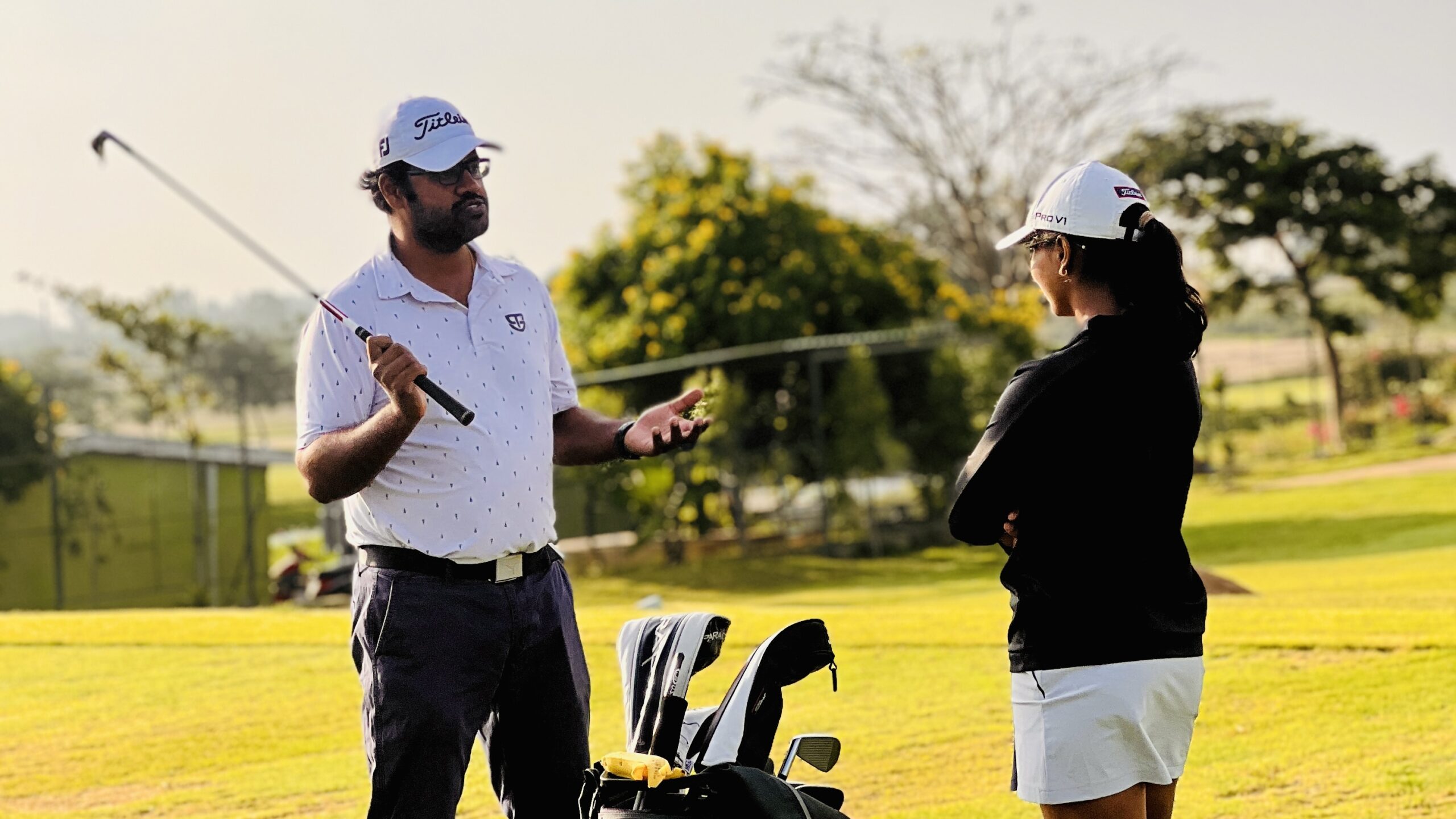Depending on how you handle it, wind may be a golfer’s worst enemy or a terrific lesson. TSG’s Head Coach Prithvraj Ram went into great detail about the difficulties of playing in windy circumstances during a recent player meeting. The conversation was a generous combination of practical knowledge and professional techniques to assist players in adjusting their strategy as the wind picks up, with feedback from players who have recently participated in the South Zone and WAGR events.
Comprehending wind on the course
Coach Prithvi began the lesson by pointing out that the new back nine at Zion Hills Golf County was more exposed in recent tournaments where there were no homes or trees, only open ground. This made players more susceptible to windy conditions. He underlined that most courses experience a lot of wind in June in particular.
One student, Prince, talked about how to make good use of low shots, particularly on the back nine. Others acknowledged that they didn’t constantly adapt to the wind and essentially played their usual game. Post which Coach Prithvi explained how wind affects direction and distance, two critical factors for any competitive golfer.
Taking advantage of the headwind
It is well known that headwinds can distort shot curvature and steal distance. In windy conditions, what would be a 3-yard fade in calm conditions could become a 15-yard miss.
But is there a solution? What can players do, then?
- As a golfer, you must make sure that the ball flies low. The ball is less likely to curve and spin off target the lower it is in the air.
- You can use a higher-lofted club and make a softer swing. This would result in lower spin, also will keep the ball flight lower, and give you more control of the shot.
- You should not feel the need to “hit harder.” Increased spin from a faster swing causes ballooning shots that usually go off-line.
- “The goal is to spin off the ball,” Prithvi reminded the golfers. In heavy winds, spin is the enemy.
Instruments for Determining wind strength
Coach Prithvi guided the players to use their senses and surroundings even when wind meters are not permitted during tournaments. Here’s how a player can do that:
- To determine the strength and direction of the wind, drop some grass in the wind.
- Observe the behavior of tall rough or flags.
- Keep an eye on your clothing’s movement; flapping pants legs are a dead giveaway of surface wind.
Developing the feel is crucial. The choice of club and trajectory determines how much to change—10 or 20 yards. You won’t lose as much distance if your ball flight is low..
Method of Shot: Low Ball Flight
To lower the apex and spin rate:
- De-loft the shot and club up.
- To prevent adding extra spin, slow down your swing.
- Keep the driver from teeing the ball close to the ground. Because of the gear impact, hitting below the sweet spot might increase spin, even if it keeps the fly low.
He also suggested swinging smoothly and teeing it at a medium height since catching the ball above the sweet spot will naturally lessen spin.
Adjustments for Tailwinds and Crosswinds
The discussion delved further into the understanding of tailwinds and crosswinds. When there is a tailwind, the ball tends to travel farther distance with less spin. It can be advantageous to toss the ball into the air for tee shots, particularly when using a driver or 3-wood. Interestingly, Coach Prithvi pointed out that a 3-wood’s higher apex can occasionally allow it to travel farther than a driver in tailwinds.
However, highball flights are dangerous for approach shots. “Aim for mid-high,” he said. It could travel 10 to 20 yards farther if you toss the ball up. Said, you won’t know.
He provided two choices in crosswinds that were either left-to-right or right-to-left:
- Aim sideways and allow the ball to be shaped by the wind.
- Use your shot shape to counter the wind. Play a draw into a right-left wind, for instance.
He also cautioned against overcompensating, though. Unexpected slices or hooks might result from unintentionally changing the swing path (such as coming over the top in a left-right wind).
Taking Control of the Mental Game
A player’s head might also be affected by windy circumstances. According to him, attempting to overcorrect—even unconsciously—changes the club course and results in directional mistakes. Not even putting is impervious. Surface breezes have an impact on your putter’s stability and the ball’s roll.
Well, in that case, what you can do is keep an eye out for ground-level indicators such as shifting vegetation or swaying balls. It may take more effort to work against the wind and less to work with a tailwind. Make the appropriate adjustments.
As the player meet moved towards the end, Coach Prithvi emphasized that players should practice these strokes on the range, especially in the absence of wind. They should also track spin rates, drill with low irons, and learn how to hit stingers. These shots are skillful. Versatility is extremely important and the young children who have stepped into golf must be conditioned in all kinds of weather, not just windy ones.
Every shot in the wind requires a greater degree of concentration and ability, whether you’re teeing off, hitting a controlled approach, or modifying your putting line.
From the place where we TSGians see this, wind is more than simply a challenge; it’s a test of technique, discipline, and flexibility. More than just a technical breakdown, Coach Prithvi’s lesson was a master class in strategic thinking in erratic circumstances. The players’ main takeaways from the meet were to trust their preparation, maintain composure, and swing strategically.
So, don’t freak out the next time you feel the breeze is getting stronger while you’re on the course. Instead take advantage of the chance to improve as a golfer.
Happy Golfing!



